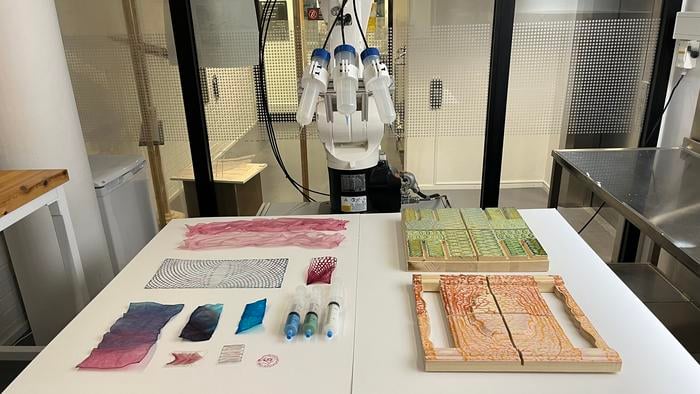
For the first time, a new material made from tiny cellulose fibers and algae has been tried as a more environmentally friendly option for construction.
Researchers from Chalmers University of Technology and the Wallenberg Wood Science Center in Sweden experimented with this sustainable material and found it can be used to create various architectural components using less energy than traditional methods.
The construction industry is a major contributor to global pollution, using half of the world’s fossil fuels, generating 40% of waste, and producing 39% of carbon dioxide emissions. To combat this, scientists are exploring biomaterials like nanocellulose, which is already used in biomedicine for its ability to be 3D printed into structures for tissue growth. This study marks the first attempt to use dried nanocellulose in architecture.
By mixing nanocellulose fibers with water and an algae-based substance called alginate, the researchers created a material that could be 3D printed. This blend provided flexibility to the material when it dried, enabling its use in architectural applications.
The use of 3D printing in architecture is seen as a resource-efficient method. Unlike traditional methods that produce waste, 3D printing requires fewer materials and less energy, particularly when using a robotic system that operates at room temperature. The properties of the nanocellulose hydrogel allow it to be easily printed and maintain its shape without requiring high temperatures.
The researchers tested various printing techniques to understand how the material behaves when dried in different shapes. These dried shapes could be used to create lightweight architectural elements such as room dividers, blinds, wall panels, and coatings for existing building components.
This study lays the groundwork for further exploration of nanocellulose in architectural design, highlighting the need for new approaches to incorporate biobased materials into buildings. Understanding the properties and design possibilities of these materials is crucial for creating sustainable and aesthetically pleasing structures that align with the goals of a circular economy.
Robotically 3D printed architectural membranes from ambient dried cellulose nanofibril-alginate hydrogel“, published in the journal Materials and Design.
#GreenBuilding #SustainableDesign #Nanocellulose #Architecture